Boiling Point: Six months until November, climate change looms large
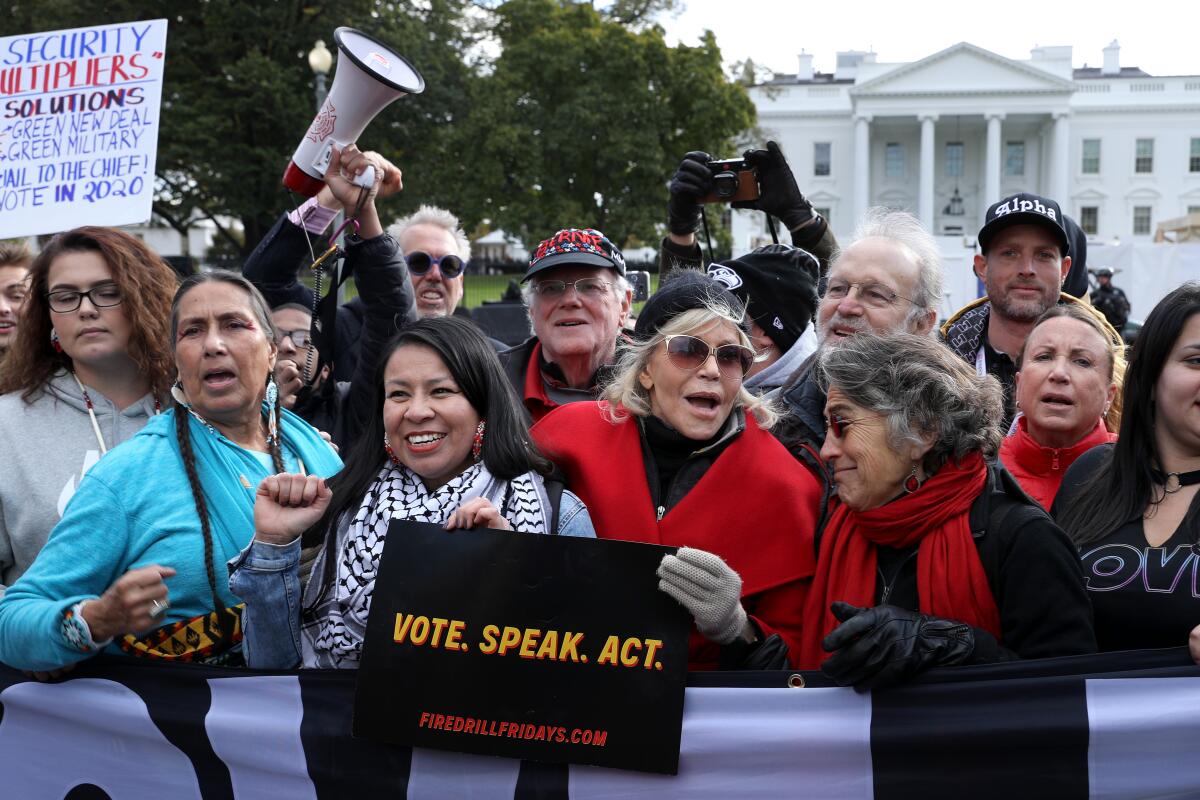
We’ve got six years to cut global carbon pollution nearly in half — and less than six months until a presidential election that could have long-lasting consequences for whether humanity reaches that hugely important climate target.
So let’s begin today’s Boiling Point by talking politics.
“As has often been said about campaign finance, these days it’s not what’s illegal that’s the problem; it’s what’s legal.” So writes my L.A. Times colleague Jackie Calmes in a column lambasting former President Trump for reportedly soliciting $1 billion in campaign support from oil industry executives in exchange for a return to the “drill, baby, drill” policies of his first term.
You're reading Boiling Point
Sammy Roth gets you up to speed on climate change, energy and the environment. Sign up to get it in your inbox twice a week.
You may occasionally receive promotional content from the Los Angeles Times.
President Biden, meanwhile, keeps handing out climate funds from the Inflation Reduction Act and the Bipartisan Infrastructure Law. U.S. Interior Secretary Deb Haaland was in L.A. last week, announcing $35 million to plug abandoned oil and gas wells, which can spew noxious fumes and heat-trapping gases, The Times’ Hayley Smith reports. The Biden administration is also ending new coal leasing on public lands in the Powder River Basin in Montana and Wyoming, per WyoFile’s Dustin Bleizeffer.
California Gov. Gavin Newsom weighed in on the presidential race, using a climate-focused speech at the Vatican to slam Trump for his quid-pro-quo offer to the Big Oil bigwigs. Newsom accused Trump of “open corruption,” as my colleague Taryn Luna reports. Taryn also explored the question of whether Catholic voters care about the climate crisis.
Back in Sacramento, the California Assembly passed a bill that would require new gas stoves to come with a warning label about pollutants linked to respiratory illnesses. The bill now moves to the Senate, per the Associated Press’ Sophie Austin. There’s broad agreement that gas-free induction cooktops are the best climate-friendly alternative to gas stoves — but they face questions, including whether they can produce high-quality stir-fry. Journalist Akielly Hu has a great story for Grist on that question.
And let’s not forget, all these political disputes are playing out against a backdrop of extremely scary trends.
A new study just found that the Northern Hemisphere experienced one of its hottest summers in 2,000 years — the last two millennia! — in 2023. (Details here from my L.A. Times colleague Hayley Smith.) Another study found that wildfire weather is on the rise in the American West — especially California. (Again, here’s the story from The Times’ Alex Wigglesworth.)
As bad are things are now, they’ll only get worse — which explains why so many kids are suing the federal government to force stronger climate action. But the lawsuits have produced mixed results. Just last week, a judge dismissed a case brought by 18 young Californians, saying climate is an issue for Congress and the president, not the courts, Alex reports.
A few other political tidbits:
- Sen. Bernie Sanders is urging Californians to vote for a ballot measure that would uphold a state law banning new oil and gas drilling near homes, schools and hospitals, which the fossil fuel industry is trying to overturn. (Benjamin Oreskes, L.A. Times)
- Newsom is wading into the tense debate over home insurance and climate-fueled wildfires, asking state lawmakers to pass a bill requiring faster review of insurance companies’ rate-hike requests. (Laurence Darmiento, L.A. Times)
- Oh look, it’s the California Environmental Quality Act being used to try to block hundreds of apartments in the San Fernando Valley, even though dense housing is a key climate solution (because sprawling suburbs lead to longer commutes and make public transit less feasible). I’m sure that’s the purpose for which CEQA was intended. (Roger Vincent, L.A. Times)
Last but not least, my colleague Julia Wick wrote a fabulous profile of Assemblymember Laura Friedman (D-Glendale), a housing- and climate-focused urbanist who will almost certainly be the next congressperson to hold U.S. Rep. Adam Schiff’s House seat.
So much for Friedman’s bill to reintroduce wolverines to California, though. The Times’ Lila Seidman reports that it was shelved in Sacramento due to a budget crunch. Seems the $235,000 to hire a scientist for a feasibility study was out of our price range.
On that note, here’s what else is happening around the American West.
THE ENERGY TRANSITION
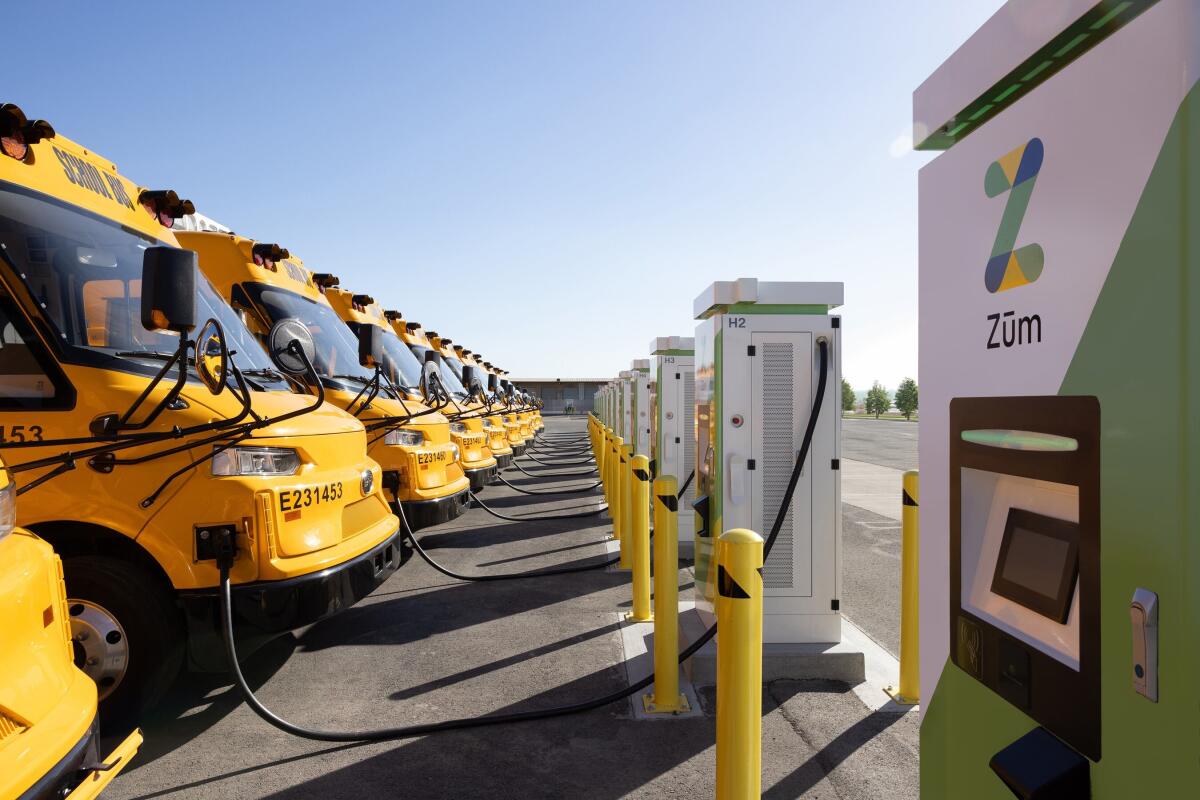
Let’s start in Oakland, with the wonderful news that Oakland Unified is now the nation’s first school district with a fully electric bus fleet. The 74 buses won’t burn heat-trapping gasoline or spew noxious fumes that damage the developing lungs of kids riding them to school, as The Times’ Andrew J. Campa reports. Also great: The buses will send electricity back into the power grid at key times, saving money for the school district and helping PG&E keep the lights on. Wired’s Matt Simon explains.
In other positive news, Canary Media’s Eric Wesoff reports that renewable energy plus nuclear combined for almost 40% of global electricity generation in 2023, with solar growing like crazy. Federal officials, meanwhile, just made it harder for states not to pay their fair share for new power lines — which sounds wonky, but basically means it should be easier to build electric wires to move solar and wind energy from where it’s produced to where it’s needed. More details here from Canary Media’s Jeff St. John.
OK, now that we’ve done the hopeful stories, let’s move on to the more challenging ones.
We need massive renewable energy infrastructure to replace fossil fuels, but figuring out where to build it is hard. One example: Solar companies aren’t happy with a Biden administration draft plan for balancing development and wildlife protection on public lands across 11 Western states, which they say could could kill dozens of solar projects, per Bloomberg Law’s Daniel Moore.
Even seemingly low-conflict alternatives to sprawling solar farms aren’t always easy winners. I wrote last week about a bill in the California Legislature that would make it less expensive for farmers in water-stressed areas to switch from crop production to solar energy generation. But lawmakers rejected the bill amid opposition from an influential agriculture industry group.
Electric lines are tough to build too, especially when the federal officials who oversee vast swaths of Western public lands make head-scratching decisions about where they should go — decisions like being willing to reroute a Warren Buffett-backed power line to avoid a possible gold mine but not a national monument, as revealed by the Nevada Independent’s Amy Alonzo.
In addition to solar farms, wind turbines and power lines, phasing out fossil fuels will require lots of batteries to store renewable power — and there are plenty of concerns about those, too. Read this story by my L.A. Times colleague Jaclyn Cosgrove about the rural Los Angeles County residents fighting a lithium-ion battery bank because they’re worried it could spread toxic chemicals during a wildfire — even though batteries are a crucial tool for fighting climate change and, thus, fires.
One more challenge, as we build all this clean energy infrastructure — how do we pay for it equitably, without the burden falling on low-income homes? The California Public Utilities Commission has decided that restructuring monthly electricity bills with a new $24 fixed charge and lower per-kilowatt-hour rates is a good starting point. The Times’ Karen Garcia wrote about how your bill might be affected. Some lawmakers tried to overturn those changes, but their efforts failed, Melody Petersen reports.
However bills are structured, the long-term problem is that utility costs are rising way too much, according to Jeff St. John. Sooner or later, we’ll need to bring down costs at Southern California Edison, Pacific Gas & Electric and San Diego Gas & Electric.
In San Diego, activists hoped to solve that problem by replacing SDG&E — which is owned by Sempra Energy — with a city-owned electric utility. But they didn’t get enough signatures for a ballot measure, per the San Diego Union-Tribune’s Rob Nikolewski.
A few other energy tidbits:
- The Los Angeles City Council unanimously confirmed former PG&E executive Janisse Quiñones as the L.A. Department of Water and Power’s general manager. She was nominated by Mayor Karen Bass. (City News Service)
- President Biden is ratcheting up tariffs on Chinese solar panels, in a move that could boost U.S. solar panel manufacturing but slow the construction of solar farms, at least in the short term. (E&E News)
HOW WE GET AROUND
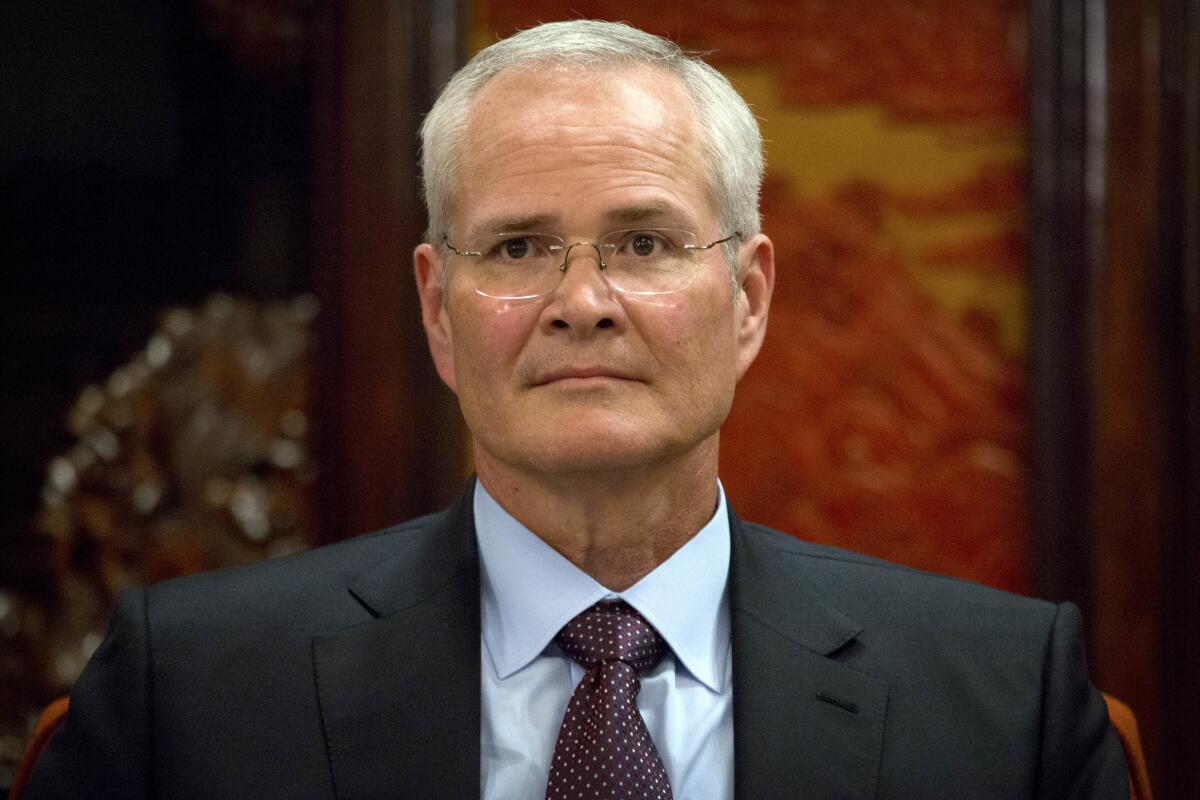
Few companies are more invested in maintaining the fossil-fueled status quo than ExxonMobil. So perhaps it’s no surprise that the oil and gas giant has become “the world’s biggest corporate bully,” in the view of L.A. Times columnist Michael Hiltzik.
Hiltzik reports that Exxon is suing some of its shareholders to silence them about global warming, lest anyone follow their lead and dare encourage the company to cut down on fossil fuel extraction. The lawsuit prompted CalPERS, the nation’s largest public pension fund, to announce Monday it will vote against all 12 Exxon board members this month, Hiltzik writes.
As it happens, I wrote recently about Exxon Chief Executive Darren Woods offering misleading takes on the climate crisis. I also wrote last week about a comedian joking that maybe Woods is “one long hug away from being like, ‘What am I doing?’”
I mean, you never know?
The best thing I can say about Exxon is that even as it devotes the vast majority of its funds to planet-wrecking oil and gas, it’s also investing in carbon storage — a technology we’ll need, alongside quickly ditching fossil fuels, for our best chance at a safe future. As usual, the challenge is “where.” I learned a lot from this story by the Washington Post’s Evan Halper about Exxon’s plan for a huge carbon storage project in Montana, which is uniting Trump voters and environmentalist ranchers in opposition.
Although there’s no comparison between electric cars and fossil-fueled vehicles in terms of harm to the planet and to our bodies, that doesn’t mean EVs are perfect. The latest example: Bay Area air-quality officials say Tesla’s Fremont manufacturing plant is a serial polluter, as my L.A. Times colleague Tony Briscoe reports. In other rough news for Elon Musk’s electric automaker, Tesla is laying off hundreds of Bay Area employees, The Times’ Karen Garcia reports.
These are rough times for electric car companies on the whole. Rivian is laying off more than 120 people in California, and Fisker is closing its Manhattan Beach headquarters (stories by The Times’ Jessica Garrison and Laurence Darmiento).
Hopefully the industry rebounds — and we keep making progress on other alternatives to internal combustion engines, such as fast trains. California is moving forward with an environmental review for 33 miles of high-speed rail between Los Angeles and Anaheim, The Times’ Colleen Shalby writes. The state is also testing alternatives to the gas tax, which involves paying based on how many miles you drive or how efficient your car is. Here’s how you can participate in a pilot, via my colleague Grace Toohey.
WATER IN THE WEST

Few stories give me more hope than those of people working to restore urban waterways and natural areas, which have taken a beating over the last few centuries but seem eager to reclaim their splendor if given the chance. I especially loved this piece by my L.A. Times colleague Lila Seidman about the volunteers, nonprofits and government officials restoring wetlands along the Los Angeles River, and the thrilling return of an endangered songbird known as the least Bell’s vireo.
Other stories paint a bleaker pictures.
The Times’ Ian James reports that California regulators have banned chinook salmon fishing on the state’s rivers for the second year in a row, citing drought and climate change. Fishing advocates, though, insist the real problem is that the governor’s administration is sending too much water to cities and farms, leaving rivers without enough cold flows for salmon to survive.
Those same critics aren’t fans of Newsom’s plan for a tunnel beneath Northern California’s Sacramento-San Joaquin River Delta. State officials now say the tunnel will cost $20 billion, up from $16 billion — but with $38 billion in benefits, Ian writes. Read the story for details on the tunnel, which Newsom describes as a climate solution but which opponents see as as a boondoggle.
Here in Southern California, water officials, lawmakers and environmentalists worked out a compromise to safeguard a nearly $800-million Colorado River conservation deal that could prevent Lake Mead from crashing, the Desert Sun’s Janet Wilson reports. The deal was almost derailed by concerns over a pupfish that has taken up residence in Imperial Valley irrigation drains. Some pupfish could die if Imperial farmers send less Colorado River water onto their fields, resulting in less runoff.
Nobody asked me, but it would have been silly not to bank more water in Lake Mead, because paying alfalfa farmers to use less of the stuff would have hurt pupfish living in human-made irrigation drains in the desert. So I’m glad a solution was reached.
In other Lake Mead news, millions of people visit the nation’s largest reservoir every year. And as the water drops due to drought and climate change, visitors have carved hundreds of miles of illegal roads to get to the edge. It’s a giant headache for the National Park Service, which is seeking millions of dollars to deal with the fallout, per the Nevada Independent’s Amy Alonzo.
Elsewhere on the Colorado River, leaders of the Navajo Nation and two other tribes are preparing to vote on a momentous water rights settlement that could begin to repair past injustices. Details here from the Associated Press’ Felicia Fonseca.
A few other water tidbits:
- It seems Elon Musk’s SpaceX is refusing to talk with the California Coastal Commission as the agency considers pushing back against rocket launches from Vandenberg Space Force Base along the Southern California coast, to limit harm to marine life. “They obviously refuse to [talk] because they’ve never shown up,” one commissioner said. (Salvador Hernandez, L.A. Times)
- It was a good year for Death Valley National Park’s endangered Devil’s Hole pupfish. (Daniel Rothberg, Western Water Notes)
Last but not least, I’ve enjoyed “Imperfect Paradise: The Gen Z Water Dealmaker,” a podcast from LAist Studios’ Emily Guerin. It’s about the ongoing seven-state negotiations over the fate of the Colorado River, as told through the life story of California’s lead negotiator, 28-year-old Imperial Valley resident J.B. Hamby. I’ve been fascinated by Hamby ever since I wrote about him in 2020, when he first ran for the Imperial Irrigation District’s board of directors and managed to unseat a longtime incumbent.
I’m only a few years older than Hamby, so young people running the world doesn’t scare me. It’s actually pretty cool.
AROUND THE WEST
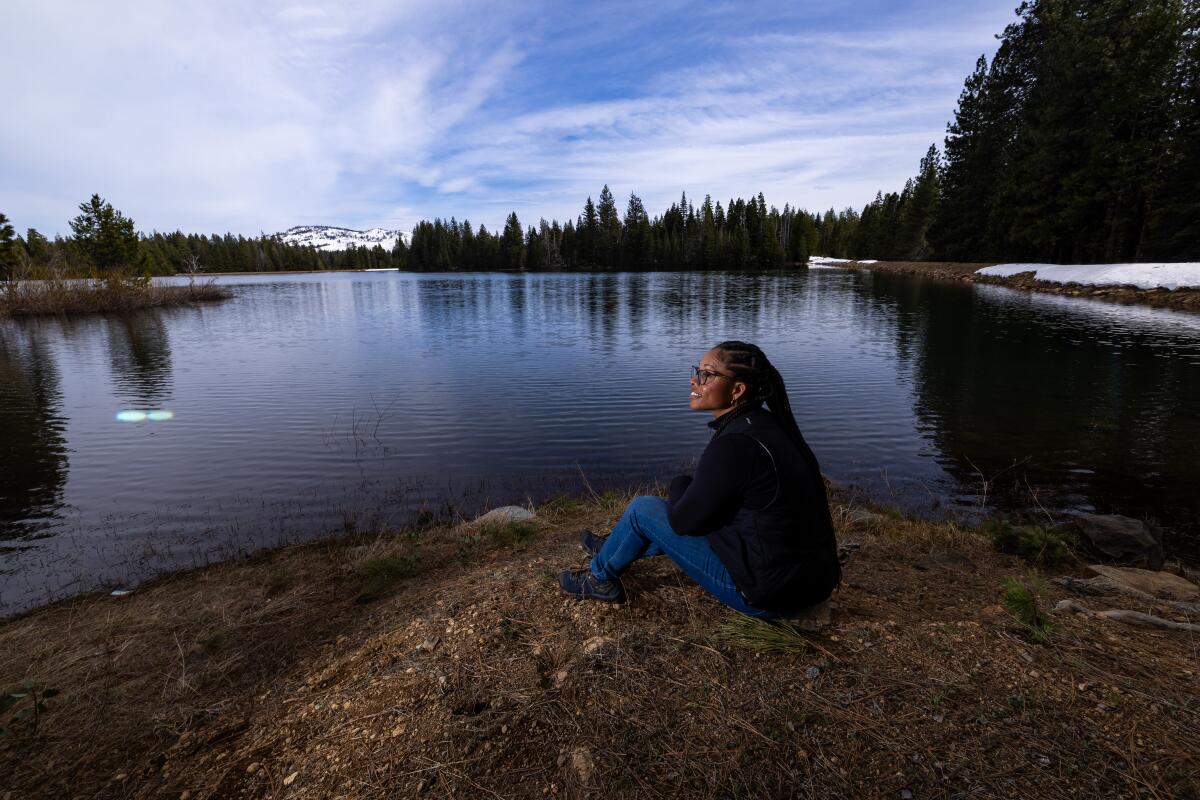
After the Civil War, Union Gen. William T. Sherman promised to grant some emancipated slaves “40 acres and a mule.” It didn’t happen, but today the 40 Acre Conservation League, California’s first Black-led land conservancy, has purchased 650 acres in the Sierra Nevada, my L.A. Times colleague Tyrone Beason reports. The group plans to make the site “a haven for experienced Black outdoor lovers and novices alike,” Tyrone writes, and to contribute to California’s climate and conservation goals.
That’s what public access looks like. What it doesn’t look like is Sutter Buttes State Park, 60 miles north of Sacramento. The park has been described by visitors as magical — but because it’s surrounded by private land whose owners won’t allow access, most people can’t get get there. There are conservationists who say that’s a good thing, The Times’ Jessica Garrison writes.
We need accessible public lands; we also need them to be healthy. Unfortunately, at least 56.7 million acres of federal lands are failing the U.S. Bureau of Land Management’s health standards — roughly half the lands the bureau has evaluated, per new data. High, cold deserts in Nevada, Wyoming and Idaho are in especially bad shape, Jimmy Tobias reports for High Country News.
The healthier the land, the healthier the animals — and, in the absence of fully restored landscapes, we do what we can.
The Biden administration, for instance, declared the dunes sagebrush lizard an endangered species, the Assocated Press’ Scott Sonner reports; oil companies say the move could spell trouble for drilling in the Permian Basin of New Mexico and Texas. Here in Los Angeles, beloved mountain lion P-22 may have a spiritual successor in Griffith Park, The Times’ Thomas Curwen reports.
A few more Western tidbits:
- One of the West’s longest-running weather stations is being moved from USC to a parking lot near Dodger Stadium. Some meteorologists are fuming, saying the four-mile relocation will contaminate climate record-keeping. (Hayley Smith, L.A. Times)
- Biden signed a bipartisan bill banning uranium imports from Russia, which could create pressure for more uranium mining on environmentally sensitive public lands to fuel nuclear power plants. (Maxine Joselow, Washington Post)
Last but not least — it turns out radioactive waste may have been buried at former landfills beneath two San Francisco Bay Area parks. State officials knew decades ago but basically forgot. Check out this wild scoop by my L.A. Times colleague Tony Briscoe.
ONE MORE THING
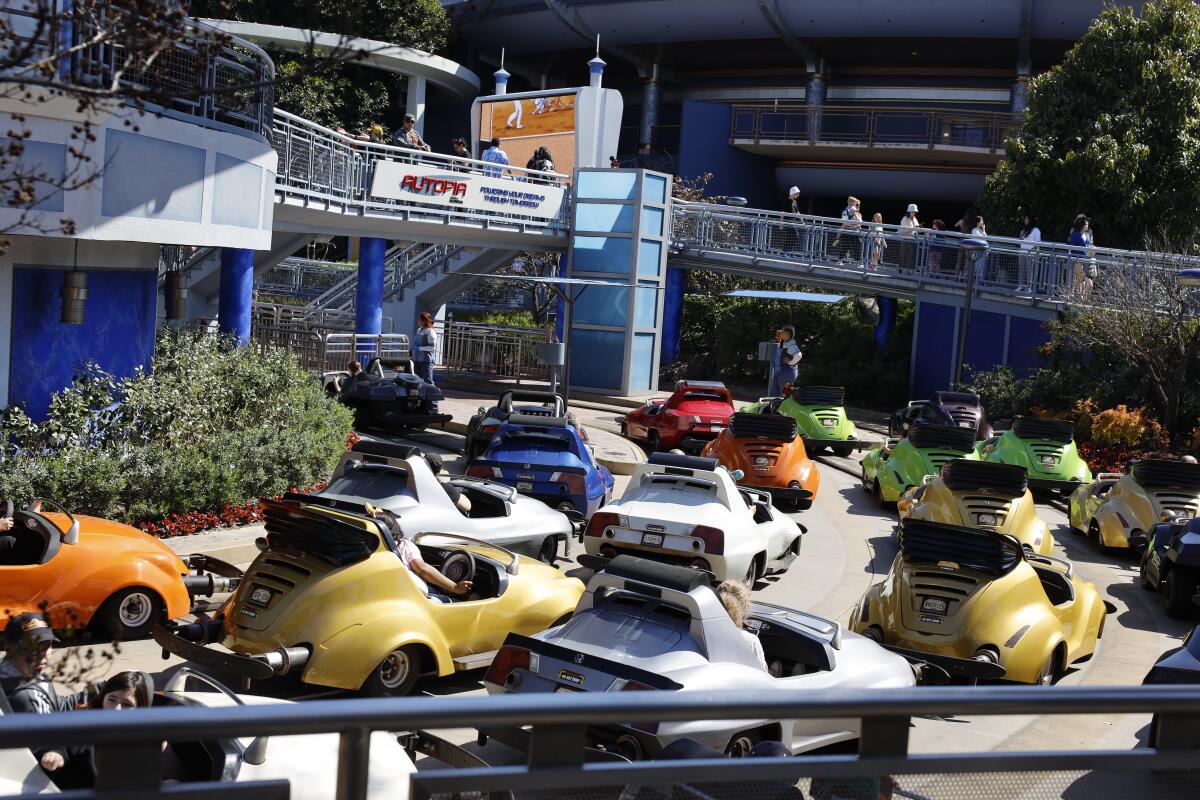
After I broke the news that Disneyland will convert Autopia from gasoline to electric cars, “After Midnight” host Taylor Tomlinson asked contestants on the CBS late-night show what else Disney might do to become eco-friendly. Their answers were hilarious.
As I wrote last week, the more climate humor, the better. Thank you for the laughs, Taylor.
We’ll be back in your inbox Thursday. To view this newsletter in your web browser, click here. And for more climate and environment news, follow @Sammy_Roth on X.
Toward a more sustainable California
Get Boiling Point, our newsletter exploring climate change, energy and the environment, and become part of the conversation — and the solution.
You may occasionally receive promotional content from the Los Angeles Times.




